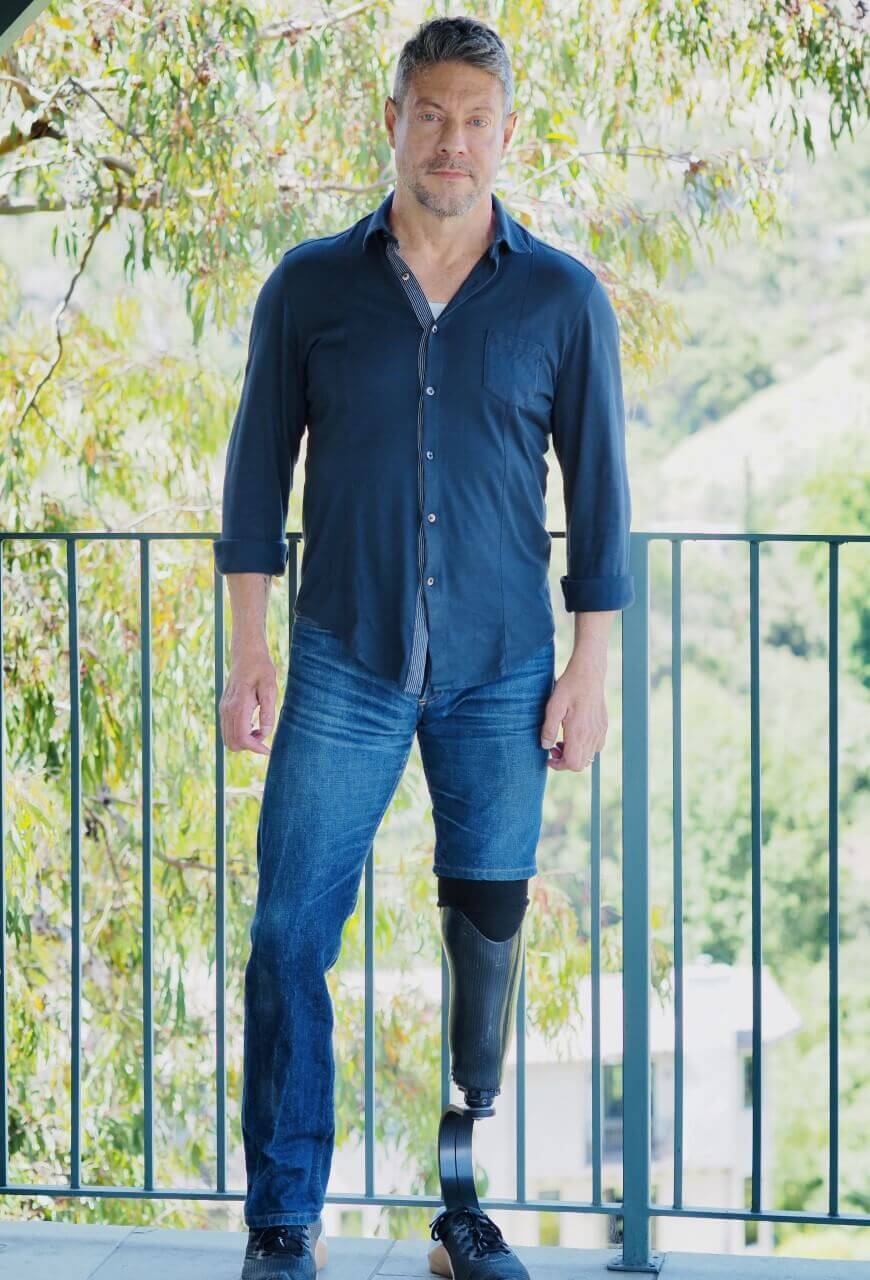By: Joe Hogan, Living with CMT1A
I heard a loud pop. Then came the sudden swelling. All I’d been doing was walking down the sidewalk when my left leg snapped. At first, I thought it was just sprained. I kept limping on it for two weeks until a doctor confirmed it was broken.
As a child, I had weak legs and walked on my tiptoes. Running and jumping was always a challenge. I was officially diagnosed with Charcot-Marie-Tooth Type 1A in my 30s.
In addition to the challenges with my legs and feet, I began losing the fine motor skills in my hands. Not being able to type accurately, button my shirt or tie my shoes is beyond frustrating, but CMT didn’t stop with my hands.
Should I Amputate My Foot?
After I broke my leg, I started walking on my ankle, creating pressure sores that kept getting infected and more broken bones in my foot. I was incredibly self-conscious of my misshapen leg and ankle. People would make comments about the way I walked or stare at me. I didn’t want to go to a pool or beach where I’d have to expose my leg.
Finally, in 2017, I had ankle reconstruction. For the first time in years, my leg looked normal. But CMT had other plans. The reconstruction didn’t work because the bones stopped fusing together. All the metal had to be removed.
I was back to where I started.
Doctors gave me three options:
- live with the pain and wear a removable cast for the rest of my life,
- undergo another surgery that probably won’t work,
- amputate a portion of my leg.
I chose amputation.
 It may sound odd, but losing my foot was actually a gift. Because of CMT, I’d had so many surgeries, infections, broken bones, months on crutches and casts that it actually felt freeing to be rid of that constant suffering. My uncle, who also has CMT and also had to have his left foot amputated, told me he never regretted it.
It may sound odd, but losing my foot was actually a gift. Because of CMT, I’d had so many surgeries, infections, broken bones, months on crutches and casts that it actually felt freeing to be rid of that constant suffering. My uncle, who also has CMT and also had to have his left foot amputated, told me he never regretted it.
But this is not a family legacy I want to pass on. This is not acceptable.
It’s Time for More than Hope
Today, I wear a hybrid prosthetic where my foot used to be that looks like a running blade. It has a “foot” on it so I can wear any shoe. I can’t jump out of bed at night to go to the bathroom without putting on my leg, and showering requires sitting or covering the prosthetic. But mentally, I’m better than ever.
For way too long, those of us with CMT have heard that we just have to “live with it.” The mental capacity it takes to focus on things that able-bodied people take for granted is emotionally draining. CMT can pull our focus from what we could be doing as creative humans and shifts it to just trying to stay upright. I’ve started a personal fundraiser to benefit the CMT Research Foundation because we need more than hope. We need treatments.
Thanks to the CMT Research Foundation’s work and the research they’re funding, I finally have more than hope. While CMT has taken my leg, I believe their approach to CMT research will help save my hands before I lose all function completely. A treatment for me would mean getting strength and function back into my hands and fingers. But more importantly, it would mean no other boy or girl had to suffer in pain or worry about putting one foot in front of the other as they walked (or ran) on the playground.
Today, I’m proud of my remaining leg and my prosthetic. I’ve had my jeans hemmed so that my prosthetic is exposed and on display. It’s a daily reminder that I’m stronger than I think and that I will be part of the force that changes the future of this disease.
You can find Joe on Instagram and Facebook at @jhogan.
Give More than Hope: Start Your CMT Fundraiser
You can give Joe and everyone living with CMT more than hope by starting a personal fundraising page to raise money for the most promising CMT research that’s solely focused on delivering treatments and cures. Setting up your fundraiser is easy! Not ready to create a personal fundraising page? Support Joe’s fundraiser or make a donation to the CMT Research Foundation now to speed urgently needed answers to families.
